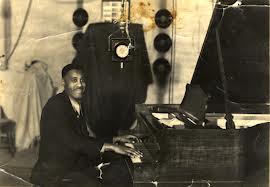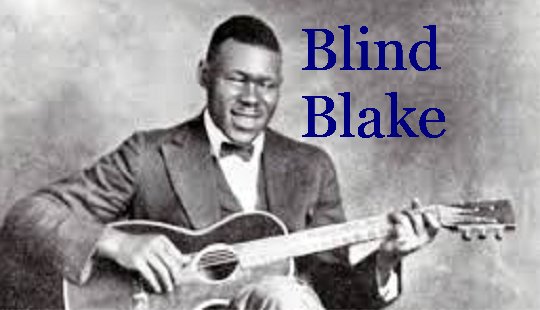What Is The Place Of Ragtime in Blues Guitar Music?
In regular guitar tuning, a specific fingerpicking style was established called 'monotonic bass' and was typical throughout all areas. The fingers typically picked the melody on the treble strings, while the thumb struck one or 2 bass notes to keep the beat.
The king of the category was a guy called Blind Blake, however there were lots of others who were really slick players, such as Blind Boy Fuller, Reverend Gary Davis and the prominent Willie Walker. Throughout the folk blues revival in the 60s, young guitar players like Stefan Grossman looked for the living blues players to learn various styles from them, as well as fuse their techniques into contemporary blues compositions. A system of notation was created called guitar tablature which permitted individuals to jot down the precise places of the fingers of each hand at any part of a piece of music.
 In the early part of the century piano music ended up being popular but was certainly a bit limiting for aspiring musicians as pianos are much more costly than guitars. Some guitar players recognized that the piano sound might be simulated by utilizing the thumb alternating in between the bass strings of a guitar, and this is basically how ragtime blues or Piedmont style of fingerstyle guitar was born.
In the early part of the century piano music ended up being popular but was certainly a bit limiting for aspiring musicians as pianos are much more costly than guitars. Some guitar players recognized that the piano sound might be simulated by utilizing the thumb alternating in between the bass strings of a guitar, and this is basically how ragtime blues or Piedmont style of fingerstyle guitar was born.Artists in the city would have been extremely pleased with the style of his finger picking - it was blues, but of a complex sructure that made you want to dance.
The very earliest guitars and fiddles were do-it-yourself affairs and not high quality instruments. This fact, and the damp weather condition were significant elements in the development of bottleneck styles of playing blues, where the guitar was commonly tuned down to open G or D. The thumb is genuinely king when it comes to fingerpicking the blues, whatever style is played.
It wasn't too long prior to a young guitar player understood that the left hand part of a piano rag might be approximated on the guitar. Ragtime blues was born and ended up being fascinating and a challenging technique to master. Some guitar players recognized that this might be simulated utilizing the thumb alternating in between the bass strings of a guitar and ragtime blues or Piedmont style was born.
The brand-new blues music being produced in the black neighborhoods after the ending of slavery in the deep south of America was gradually turning to dance, and artists frequently stated you had to 'drag' the pace a little, or 'rag' it. It's extremely possible that ragtime music came from these sources.
Historians think that the very first music that might properly be called blues appeared in the Mississippi Delta in the Deep South of America in the late 1890s. African servants would sing or shout so-called 'field cries', which were frequently in the call and action format and these tunes assisted the work rate. This kind of tune was carefully connected to spirituals sang in the Churches at that time and were rarely accompanied by any type of instrument.
In 1910 a young whorehouse piano player called Scott Joplin created a brand-new style of playing piano that was extremely complex. He used the classical understanding he had through his musical training and used to play honky-tonk barrel house piano which developed into ragtime. Making use of guitar tablature considerably sped up the learning procedure and it wasn't too long before the very best players were transcribing the initial Scott Joplin piano tunes for guitar and the circle was complete.
Many guitarists took the style even further and utilized the thumb to pick any string at all. The thumb is genuinely king when it comes to fingerpicking the blues, whatever style is played, and it needn't just stick to the bass strings!
Typically it's the small things which guitarists include that create all the difference. A lot of of us have played Candy Man by Gary Davis, for a lengthy time, with varying degrees of success. I've performed it for years, and then I decided to take a closer look tosee what's happening in the picking patterns.Of course, we understand that the Reverend employed just one finger and his thumb for his right hand picking, but that's simply the start of his genius for blues music. Loosen up those fingers and we'll make a start ... One Of The Last Greatest Blues Guitar GiantsReverend Gary Davis was uncommon in quite a few respects. The complexity and musical richness of his music is very well known, and we might think ourselves to be quite fortunate because his prowess remained undiminished in his later years. Unlike many blues men, who discontinued performing and restarted after they had been 'found' again, Gary Davis in no way stopped playing.It was still his habit to play the blues in the streets around Harlem until he became in vogue once again, after that started to make records and play live gigs once again. He was also quite inclined to give blues guitar lessons to pretty much any individual that asked him, it appears, and so the magic were handed on to youthful guitarists similar to Stephan Grossman and many others.First of all, Davis used the thumb and index finger of his right hand to create all of those extremely complicated sounds. Of course, his finger could move rapidly and seemed to move separately from his thumb. He also used picks, which helps to be much more accurate.He was really proficient in any key, either major or minor, but it wasn't that fact that exemplified his technique (for me.) The timing of his thumb beats were rock solid, as you would expect, and he could break out of the alternating bass pattern at will, either to double time and generate syncopated rhythms, or to create lightning rapid single string runs. For the second option, he would pick a string alternately with his thumb and finger, as if he had been using a plectrum. This was remarkable enough, but he frequently sang at the same time which is a great trick -try it sometime!His thumb would also leap across to the treble strings if needed, to finish a run or a phrase, providing the impression of other finger was being applied. The consequence was a special experience of ragtime guitar playing which has certainly not been equaled.Article Source: http://www.bonzao.info/vgarticles/article33516.html
Blind Blake - The King Of Ragtime Blues Guitar
 Arthur Blake didn't hold this title for absolutely nothing. He's normally accepted as the fastest and most precise ragtime blues finger picker there ever was, other than perhaps for Willie Walker and Reverend Gary Davis.
Arthur Blake didn't hold this title for absolutely nothing. He's normally accepted as the fastest and most precise ragtime blues finger picker there ever was, other than perhaps for Willie Walker and Reverend Gary Davis.When playing ragtime, the thumb rotates in between 2 or 3 bass strings, however can likewise move over to the treble strings if required to make a quick single string run with thumb and fore finger. It's a really hard style to master, not least since the thumb roll hurts the thumb, and it's essential to practice in order to establish a thick callous at the contact point.
With his difficult drinking habits and neglectful personal habits (by all accounts), he went to Chicago from the Deep South and brought with him the rapid Geechee guitar playing style he learnt in his youth. Guitarists in the city would have loved this style of his finger picking - it was blues, however a very different feel to the monotonic bass style prevalent in those times. It simply didn't have the tone or character to sing delta blues. His genuine power and know-how was in his finger style strategy, and specifically his thumb work.
Unlike numerous blues guitar players, no movie of Blake exists which is a big, big pity. When I first heard West Coast Blues, his very first record, I was amazed that it was played on just one guitar - it was just Blake!
Out of all the blues guitar categories in the broad classification 'guitar', ragtime or Piedmont, is maybe the most difficult both to find out what's going on and likewise to perform it with confidence. Modern Travis finger-picking techniques and patterns owe a big debt to the early blues guys who attempted to copy the syncopated melodies of the popular piano rags (Scott Joplin) and make the very same enticing noise on simply 6 guitar strings!
The style is also called 'Piedmont', which is a plateau area between in between the Atlantic Coastal Plain and the primary Appalachian Mountains, and guitar players from a lot of States started playing this type in one form or another. The King Of Ragtime, Blind Blake, came from Florida and settled in the Chicago metropolitan area at about the very same time as Big Bill Broonzy was swinging the blues up there, so it genuinely was an American-wide phenomenon.
Stella Harmony Guitars- A Significant Factor In Spreading The Appeal Of The Blues
In those days, mass produced guitars were just appearing care of Sears Company, and inexpensive instruments might be purchased for the measly sum of $1. Everything came together at the right time, bringing the possibility for making dance music and happy 'blues' tunes with inexpensive instruments - people wanted to escape daily drudgery and a brand-new style of playing was born just right for dancing - ragtime guitar style.
Just a Few of The Outstanding Ragtime Blues Guitarists
Perhaps one the most popular one finger guitar players was Reverend Gary Davis, who was really a complete master on any style of guitar picking. Often, he might play ragtime as well as Delta style blues, however in his later years he chose to sing his Gospel tunes to the passers-by in Harlem where he lived.
It's quite extraordinary that a lot of the excellent players simply utilized one finger, guitar players such as Doc Watson, Floyd Council and lots of others. Broonzy didn't play exactly what we call 'ragtime', he did reveal an incredible capability to develop syncopation without alternating his bass strings, however he was rather an exception. Merle Travis adapted the old ragtime designs he heard as a kid and produced some timeless pieces, and yes, you guessed it - he utilized simply one finger.
The Rest Of The Best Piedmont and Ragtime Style Guitar Pickers
The tunes played by traveling jug bands were mainly spirited ragtime pieces and the collection was complete with other tunes popular at the time, simply to please the rural audiences that gathered as they journeyed from town to town. Apart from the big names that we have all heard, like Blind Boy Fuller (who was taught by Gary Davis) there's a wide variety of so-called 'small' blues guitar players who also performed powerful ragtime guitar songs and tunes.